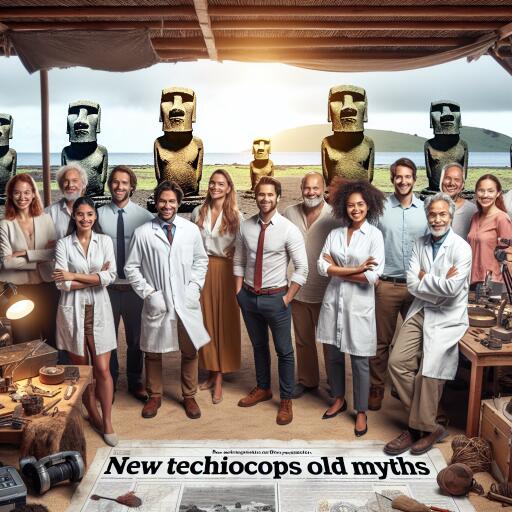
New Techniques Debunk Myth, Estimate Easter Island’s Population
The narrative of Easter Island (Rapa Nui) has long been a cautionary tale of ecological overuse and societal collapse. Legend has it that the island’s inhabitants pushed their environment to the brink by felling trees to erect their iconic moai statues, leading to a drastic decrease in population. However, groundbreaking research is challenging this perspective, shedding new light on the island’s historical population size and its people’s ingenuity in sustainable agriculture.
Utilizing advancements in technology, a recent investigation has delved into the agricultural capabilities of Rapa Nui before European contact. The team’s findings, published in a respected science journal, suggest that the island’s population was likely never as large as previously believed. This research was collaboratively conducted by experts in anthropology and environmental science, including specialists from Binghamton University and the University of Arizona, alongside independent researchers from Rapa Nui itself.
Easter Island’s volcanic origins and million-year history have led to soil conditions that are less than ideal for agriculture. Key nutrients necessary for plant growth, such as potassium, phosphorus, and nitrogen, have been leached away by rain, while salt from ocean spray further reduces soil fertility. To combat these challenging conditions, the islanders developed innovative agricultural techniques.
Initially resorting to slash-and-burn tactics to enrich the soil with nutrients from burnt trees, they eventually turned to more sustainable methods as timber resources dwindled. Composting and, more importantly, the use of rock mulch were crucial in their efforts to maintain soil fertility. Rock mulch involves incorporating broken rock into the soil, a labor-intensive process but one that helped protect and nurture the island’s crops, primarily sweet potatoes, which were cultivated in various varieties.
These stone gardens, while labor-intensive to maintain, showcased the Rapa Nui inhabitants’ resilience and adaptability. However, not every rock formation on the island was part of these ancient gardens. New methodologies involving shortwave infrared (SWIR) satellite imagery and machine learning have now provided a clearer picture of just how extensive these gardens were. This innovative approach has corrected previous overestimations, revealing that the gardens covered around 180 acres, a much smaller area than earlier projections based on less sophisticated satellite imagery.
Armed with this new data, researchers have recalculated the pre-contact population of Rapa Nui, estimating it to be around 3,000 individuals. This figure aligns more closely with the earliest European observations and the archaeological record, suggesting a society that successfully managed its limited resources without precipitating its own downfall. It appears that the island’s inhabitants were able to adapt their agricultural practices to their environment, successfully staving off ecological disaster.
The revised understanding of Rapa Nui’s pre-contact population and agriculture presents a stark contrast to the popular narrative of ecological collapse. Instead of a cautionary tale of overexploitation, the island’s history is now seen as a testament to human ingenuity and adaptability in the face of harsh environmental conditions. The iconic moai statues, rather than being symbols of the islanders’ downfall, stand as enduring monuments to their remarkable resilience and the sustainable practices they employed to survive.
As this research underscores, the true story of Easter Island is far more complex and enlightening than previously thought. It challenges longstanding myths and highlights the importance of contextual understanding in the study of ecological and societal sustainability. By revisiting and revising the narrative of Rapa Nui, we gain valuable insights into the potential for human societies to live in harmony with their environment, even under the most challenging conditions.





Leave a Reply